Search titles
Displaying results 131 to 140 of 248.
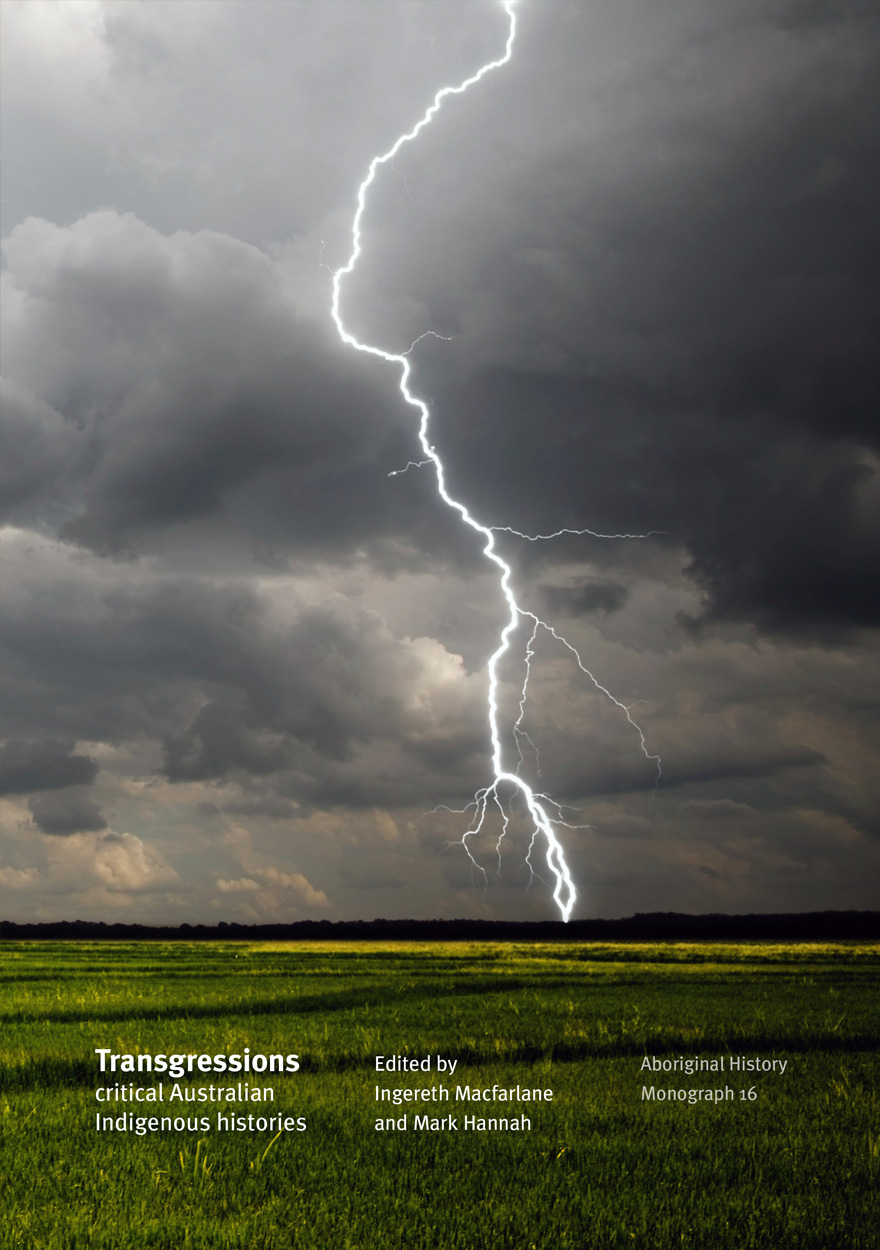
Transgressions »
Critical Australian Indigenous histories
Edited by: Ingereth Macfarlane, Mark Hannah
Publication date: December 2007
This volume brings together an innovative set of readings of complex interactions between Australian Aboriginal people and colonisers. The underlying theme is that of ‘transgression’, and Michel Foucault’s account of the necessary dynamic that exists between transgression and limit. We know what constitutes the limit, not by tracing or re-stating the boundaries, but by crossing over them. By exploring the mechanisms by which limits are set and maintained, unexamined cultural assumptions and dominant ideas are illuminated. We see the expectations and the structures that inform and support them revealed, often as they unravel. Such illuminations and revelations are at the core of the Australian Indigenous histories presented in this collection.
For more information on Aboriginal History Inc. please visit aboriginalhistory.org.au.
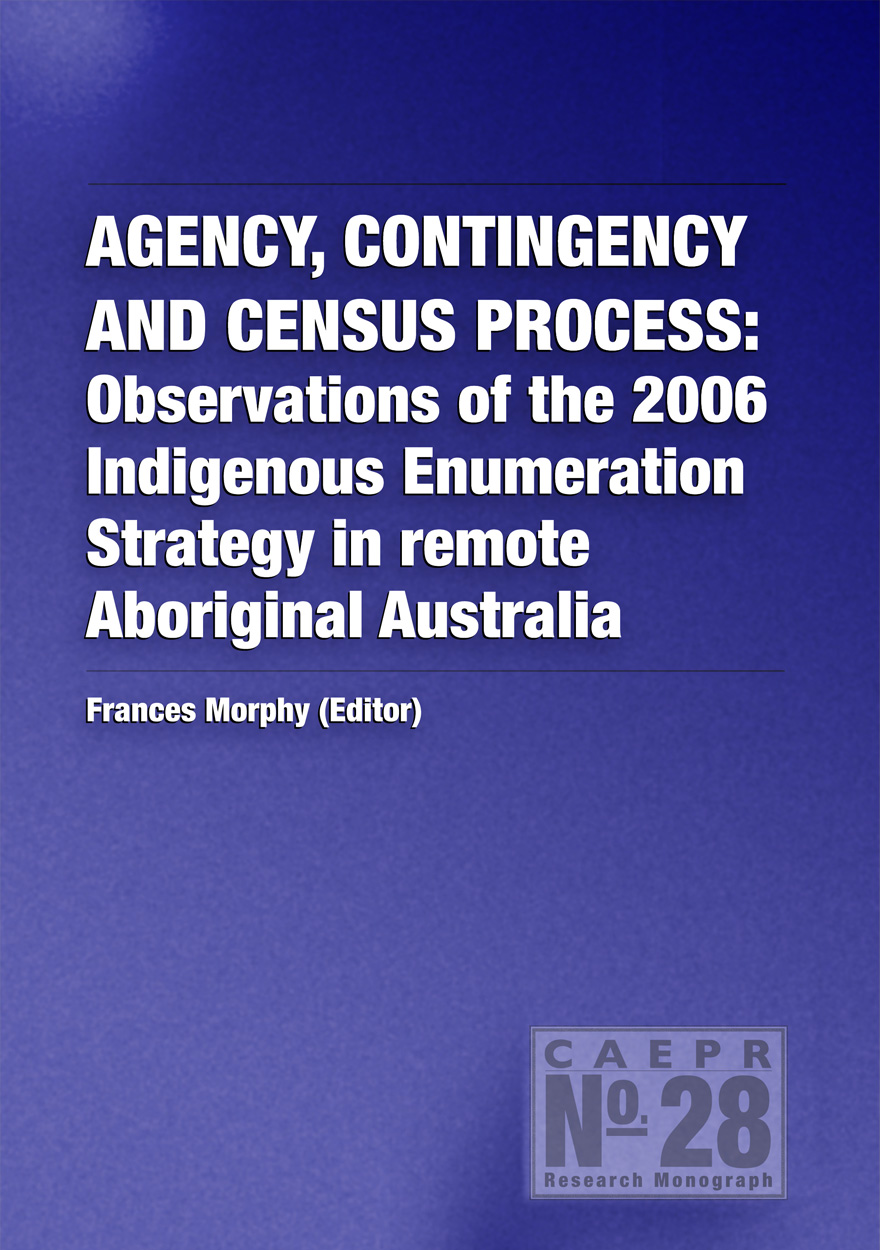
Agency, Contingency and Census Process »
Observations of the 2006 Indigenous Enumeration Strategy in remote Aboriginal Australia
Edited by: Frances Morphy
Publication date: December 2007
The Indigenous Enumeration Strategy (IES) of the Australian National Census of Population and Housing has evolved over the years in response to the perceived ‘difference’ of the Aboriginal and Torres Strait Islander populations. Its defining characteristics are the use of locally recruited, mostly Indigenous collector interviewers, and the administration of a modified collection instrument in discrete Indigenous communities, mostly in remote Australia.
The research reported here is unique. The authors, with the assistance of the Australian Bureau of Statistics, were able to follow the workings of the IES in the 2006 Census from the design of the collection instrument to the training of temporary census field staff at the Northern Territory’s Census Management Unit in Darwin, to the enumeration in four remote locations, through to the processing stage at the Data Processing Centre in Melbourne. This allowed the tracking of data from collection to processing, and an assessment of the effects of information flows on the quality of the data, both as input and output.
This study of the enumeration involved four very different locations: a group of small outstation communities (Arnhem Land), a large Aboriginal township (Wadeye), an ‘open’ town with a majority Aboriginal population (Fitzroy Crossing), and the minority Aboriginal population of a major regional centre (Alice Springs). A comparison between these contexts reveals differences that reflect the diversity of remote Aboriginal Australia, but also commonalities that exert a powerful influence on the effectiveness of the IES, in particular very high levels of short-term mobility. The selection of sites also allowed a comparison between the enumeration process in the Northern Territory, where a time-extended rolling count was explicitly planned for, and Western Australia, where a modified form of the standard count had been envisaged.
The findings suggest that the IES has reached a point in its development where the injection of ever-increasing resources into essentially the same generic set and structure of activities may be producing diminishing returns. There is a need for a new kind of engagement between the Australian Bureau of Statistics and local government and Indigenous community-sector organisations in remote Australia. The agency and local knowledge of Indigenous people could be harnessed more effectively through an ongoing relationship with such organisations, to better address the complex contingencies confronting the census process in remote Indigenous Australia.
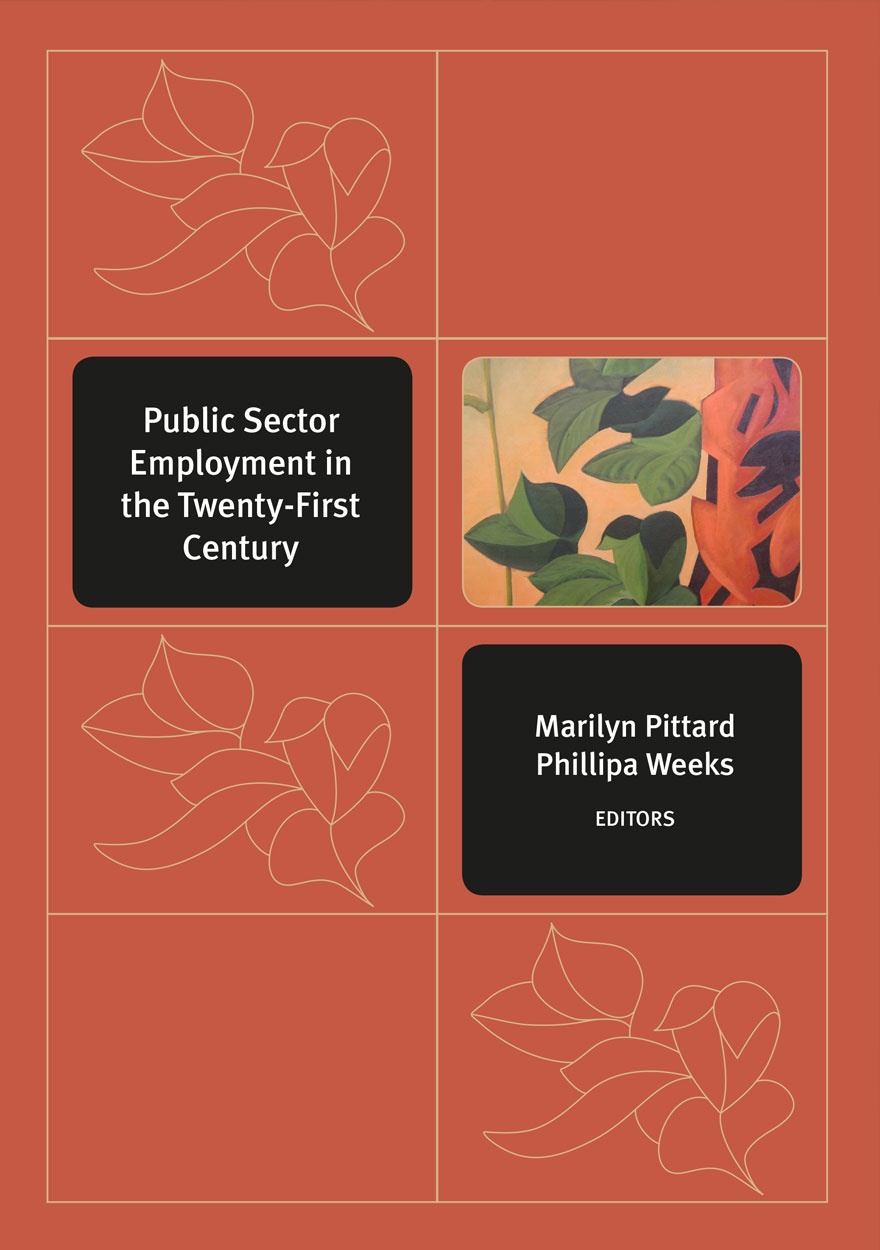
Public Sector Employment in the Twenty-First Century »
Edited by: Marilyn Pittard, Phillipa Weeks
Publication date: November 2007
This book addresses the transformations which have occurred in employment arrangements and practices in the Australian public sector over the past decade and the changes in responsibilities and accountability through employment contracts, whistleblower legislation and partnerships between government and the private sector. It provides a comparative context through studies of reconstruction of the public service in the United Kingdom and New Zealand. Themes of contractualisation, privatisation and outsourcing are explored and critically examined, as well as influences of the industrial relations legislative framework including the Work Choices legislation.

Talking and Listening in the Age of Modernity »
Essays on the history of sound
Edited by: Joy Damousi, Desley Deacon
Publication date: November 2007
Historians have, until recently, been silent about sound. This collection of essays on talking and listening in the age of modernity brings together major Australian scholars who have followed Alain Corbin’s injunction that historians ‘can no longer afford to neglect materials pertaining to auditory perception’.
Ranging from the sound of gunfire on the Australian gold-fields to Alfred Deakin’s virile oratory, these essays argue for the influence of the auditory in forming individual and collective subjectivities; the place of speech in understanding individual and collective endeavours; the centrality of speech in marking and negating difference and in struggles for power; and the significance of the technologies of radio and film in forming modern cultural identities.

Caretaker Conventions in Australasia »
Minding the Shop for Government
Authored by: Anne Tiernan, Jennifer Menzies
Publication date: October 2007
A revised and updated 2014 edition of Caretaker Conventions in Australasia is available.
In this monograph, Anne Tiernan and Jennifer Menzies capably chart the often hazardous terrain of the ‘caretaker period’ that ensues from the time an election is called until a new government is formed. This is a landscape fraught with political and administrative dangers – particularly for public servants who are required to ‘mind the shop’ and keep the basic machinery of government going. The conventions represent an historical accretion of custom, practice and rules, often leavened with uncertainty. In tackling their subject, Tiernan and Menzies draw upon their shared past experiences as public servants and ministerial ‘staffers’ as well as the highest standards of academic scholarship – this is a ‘must read’ for politicians, public servants and students of government.

Culture in Translation »
The anthropological legacy of R. H. Mathews
Edited by: Martin Thomas
Publication date: September 2007
R. H. Mathews (1841–1918) was an Australian-born surveyor and self-taught anthropologist. From 1893 until his death in 1918, he made it his mission to record all ‘new and interesting facts’ about Aboriginal Australia. Despite falling foul with some of the most powerful figures in British and Australian anthropology, Mathews published some 2200 pages of anthropological reportage in English, French and German. His legacy is an outstanding record of Aboriginal culture in the Federation period.
This first edited collection of Mathews’ writings represents the many facets of his research, ranging from kinship study to documentation of myth. It include eleven articles translated from French or German that until now have been unavailable in English. Introduced and edited by Martin Thomas, who compellingly analyses the anthropologist, his milieu, and the intrigues that were so costly to his reputation, Culture in Translation is essential reading on the history of cross-cultural research.
The translations from the French are by Mathilde de Hauteclocque and from the German by Christine Winter.
For more information on Aboriginal History Inc. please visit aboriginalhistory.org.au.
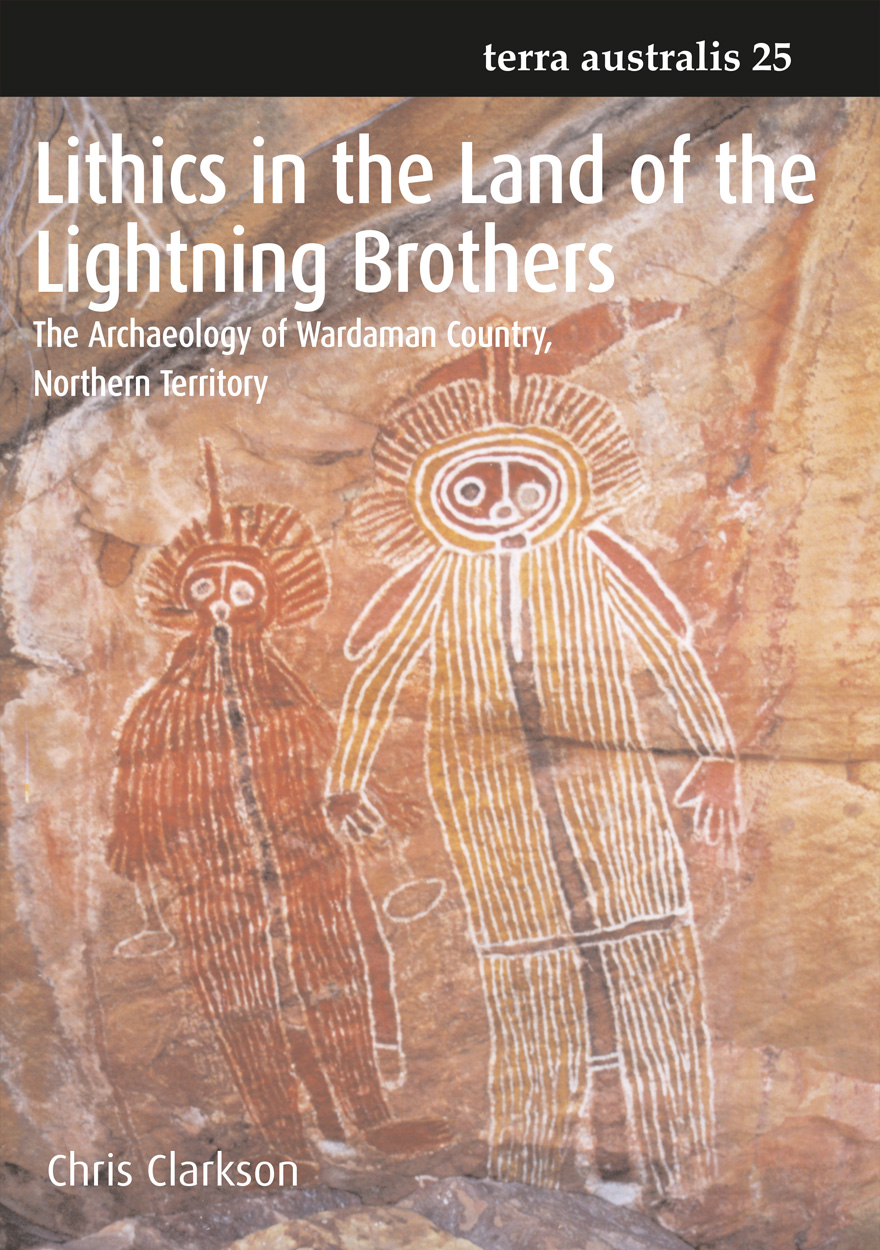
Lithics in the Land of the Lightning Brothers »
The Archaeology of Wardaman Country, Northern Territory
Authored by: Chris Clarkson
Publication date: September 2007
Lithics in the Land of the Lightning Brothers skilfully integrates a wide range of data-raw-material procurement, tool design, reduction and curation, patterns of distribution and association-to reveal the major outlines of Wardaman prehistory. At the same time, the book firmly situates data and methods in broad theoretical context. In its regional scope and thorough technological approach, this book exemplifies the best of recent lithic analysis and hunter-gatherer archaeology.
Any archaeologist who confronts the challenge of classifying retouched stone tools should consult this volume for a clear demonstration of reduction intensity as a source of size and form variation independent of “type.” Yet the demonstration is not merely methodological; Clarkson shows how the measurement of reduction intensity informs analysis of technological diversity and other cultural practices.
In Clarkson’s hands, Wardaman prehistory emerges as a particular record of the human past. Yet the book is also a case study in prolonged cultural response to environmental conditions and the way in which cultures persist and reproduce themselves over long spans of time. The result is an analytical tour de force that will guide hunter-gatherer archaeology in Australia and elsewhere for years to come.
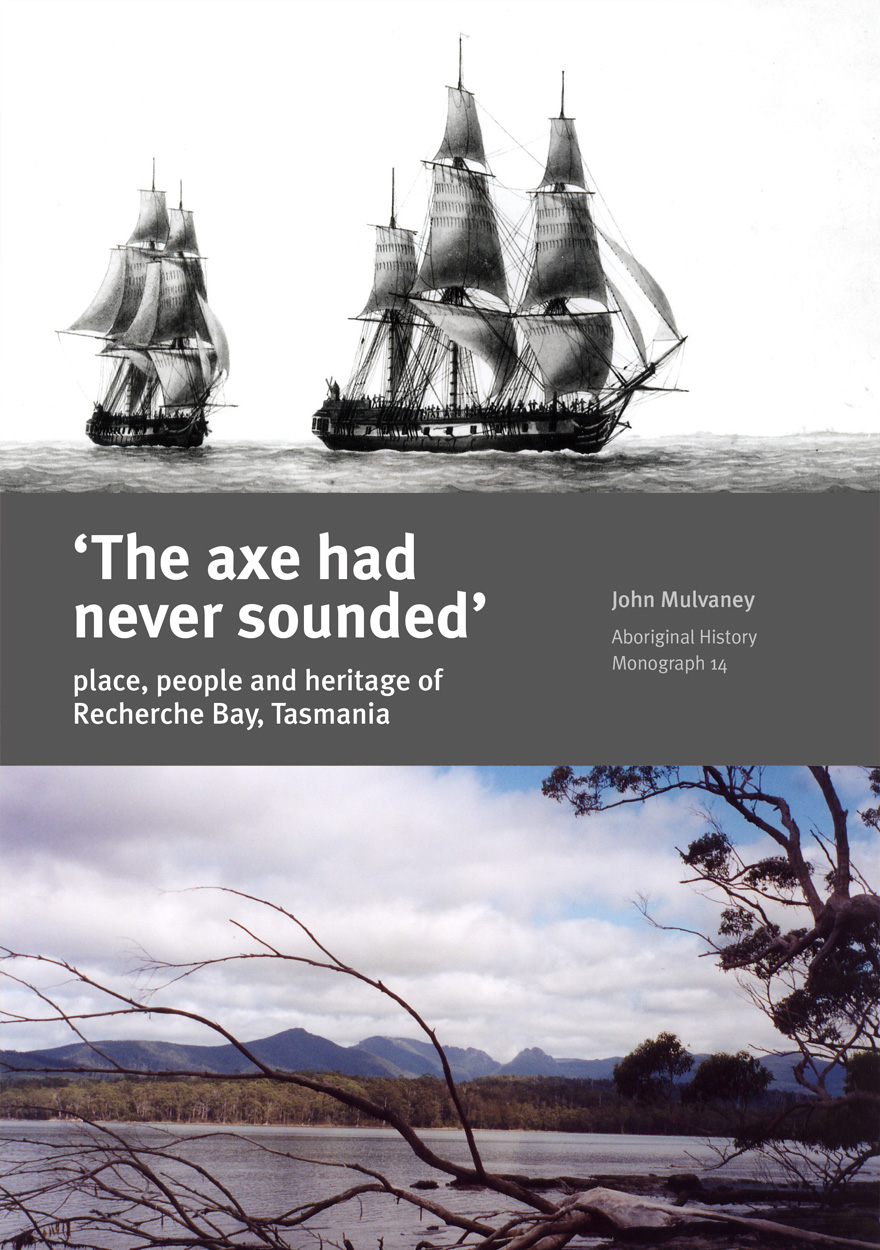
'The Axe Had Never Sounded' »
Place, people and heritage of Recherche Bay, Tasmania
Authored by: John Mulvaney
Publication date: August 2007
‘This book meets well the triple promise of the title – the inter-connections of place, people and heritage. John Mulvaney brings to this work a deep knowledge of the history, ethnography and archaeology of Tasmania. He presents a comprehensive account of the area’s history over the 200 years since French naval expeditions first charted its coastlines. The important records the French officers and scientists left of encounters with Aboriginal groups are discussed in detail, set in the wider ethnographic context and compared with those of later expeditions.
‘The topical issues of understanding the importance of Recherche Bay as a cultural landscape and its protection and future management inform the book. Readers will be challenged to consider the connections between people and place, and how these may constitute significant national heritage.’
Professor Isabel McBryde, AO, FRAI, FAHA, FSA
The Australian National University
For more information on Aboriginal History Inc. please visit aboriginalhistory.org.au.

The Nature of Northern Australia »
Its natural values, ecological processes and future prospects
Publication date: July 2007
Northern Australia stands out as one of the largest natural areas remaining on Earth- alongside such global treasures as the Amazon rainforests, the boreal conifer forests of Alaska and Canada, and the polar wilderness of Antarctica. Nature remains in abundance in ‘the North.’
Its intact tropical savannas, rainforests, and free flowing rivers provide a basis for much of the economic activity and the quality of life for residents of the area.
The Nature of Northern Australia details the latest science on the Northern environment.
With increasing debate over the future of Australia’s often forgotten North, this is a timely examination of its environmental significance, the ecological processes that make it function, and the economies that are compatible with maintaining healthy communities and people and healthy country into the future.
The authors, Dr. John Woinarski, Professor Brendan Mackey, Professor Henry Nix and Dr. Barry Traill, are leading experts on the environment of Northern Australia, and combined have many decades of experience on Northern ecology and land management.

Re-Visioning Arts and Cultural Policy »
Current Impasses and Future Directions
Authored by: Jennifer Craik
Publication date: July 2007
In this monograph, Jennifer Craik undertakes a critical and historical analysis of the main imperatives of arts and cultural policy in Australia. With forensic skill she examines the financial and policy instruments commonly relied upon in this much contested and diverse area of public policy. Craik uses her analysis of past and current policy responses as a platform for articulating future options. This is a valuable work for cultural professionals and administrators, art historians and, indeed, anyone with an abiding interest in the management of the nation’s cultural estate.



